
Share
For several months, the British architecture practice RSHP, winner of the design competition with an international, multi-disciplinary team, has been working tirelessly in collaboration with the project partners to develop a high-quality response to the various issues of the preventive conservation and enhancement of the artwork, the impact on the urban environment and the time schedule.
Key stages in the timetable
The shared objective is to complete the project with a view to opening the new Bayeux Tapestry Museum in 2027, to mark the millennium of the birth of William the Conqueror. To meet this deadline, the current museum will have to be closed to the public after the 2025 summer season.
Before the museum is closed to the public, archaeological excavations will be scheduled throughout the area affected by the project. While the museum is being built, the Bayeux Tapestry will be kept in a storage area specifically designed for its conservation. The removal of the tapestry from its current display case and its conditioning will naturally be carried out in close collaboration with the services of the French State, owner of the artwork, in order to ensure the preservation of one of the most precious heritage objects of the 11th century, classified as a Historic Monument and listed in the UNESCO’s Memory of the World register.
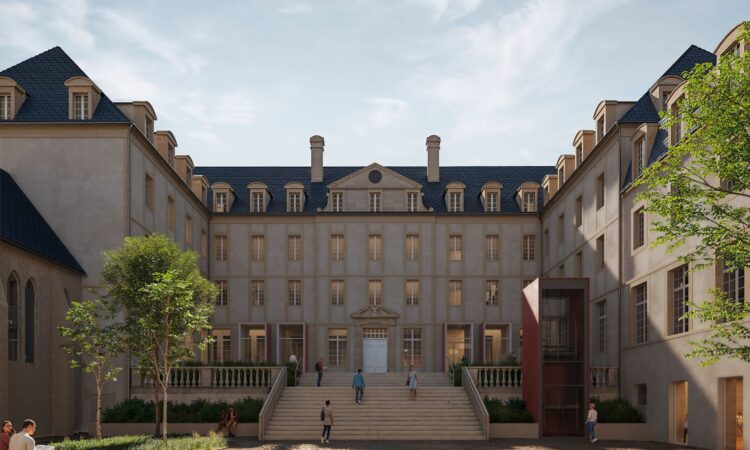
The future Bayeux Tapestry Museum will remain at the heart of the town, combining ancient and contemporary in two large architectural ensembles. Within this 11,000 m2 urban area, a new extension will be built next to the current Grand Séminaire (17th century), which will be completely renovated.
“This cultural and historical lung had to remain close to the Cathedral, to continue to unravel the thread of its history and to meet the challenges of our tourism strategies.” Loïc Jamin, Bayeux Deputy Mayor in charge of Museums, Tourism and the Promotion of Bayeux’s Heritage
The new building will house the Tapestry, which will now be displayed on an inclined support more than 70 metres long, to meet the conservation requirements arising from diagnostics on the material condition of this extremely fragile textile, which is almost 1,000 years old.
As since 1983, the Bayeux Tapestry will be conserved in a hermetically sealed room that will protect it from variations in light, climate and atmospheric pollution. A window along the length of this controlled conservation area will also serve as a showcase for the public. The support on which the work is presented will be tilted towards this opening, allowing visitors to appreciate the monumentality of the narration, which is as long as the distance between the pillars of the Eiffel Tower!
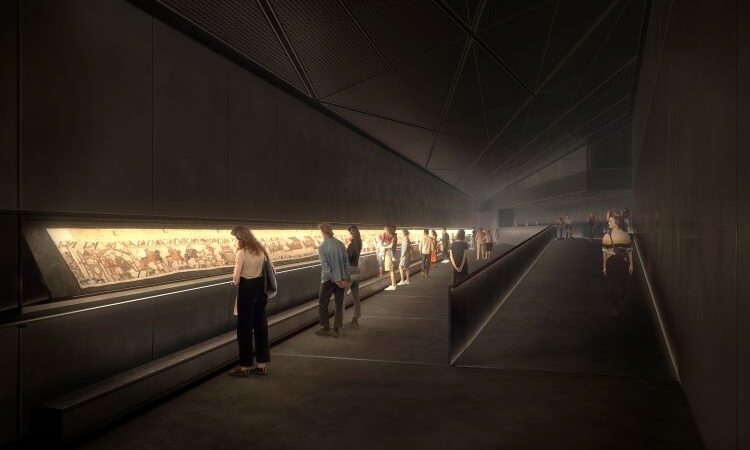
Three times, three views of the Bayeux Tapestry
The management of visitor flows and hospitality (the Bayeux Tapestry Museum welcomed 423,000 visitors in 2023) will also be greatly improved through this project, with the creation of spaces that are more in line with the expectations of today’s public: a convivial area, cloakrooms, special rooms for school groups, a study room, an auditorium, a temporary exhibition room, and more. Particular attention will be paid to accessibility for disabled visitors, with specially adapted museography and, above all, a new entrance via the main courtyard, which has been redesigned to provide access for all.
The Bayeux Tapestry, to which the museum is entirely dedicated, will be at the heart of the exhibition space, which will be doubled in size with the new building. Thanks to ingenious construction of spaces on two levels, visitors will be able to discover the embroidery from different angles and backgrounds, supported by comprehensive displays.
The first look is intended to be a visual shock for visitors, who will gradually discover the work overlooking the exhibition gallery via a 180° view. As they move towards the beginning of the Bayeux Tapestry, equipped with their audio guide, visitors will then enjoy an intimate relationship with the embroidered canvas, which tells the story of the conquest of England in the 11th century by William, Duke of Normandy.
Visitors will be able to continue their exploration by entering the interpretation areas on the second level, while maintaining visual contact with the original work below. This new tour will allow visitors to deepen their experience, immersing themselves in the medieval world, and their knowledge – thanks to the results of recent scientific research.
PRACTICAL INFO: Sketches of the future setting for the Bayeux Tapestry will be on display in the chapel, located in the courtyard of the current museum. This information area dedicated to the project is open to the public during opening hours.
Image visualisation galerie ©Atelier Brueckner
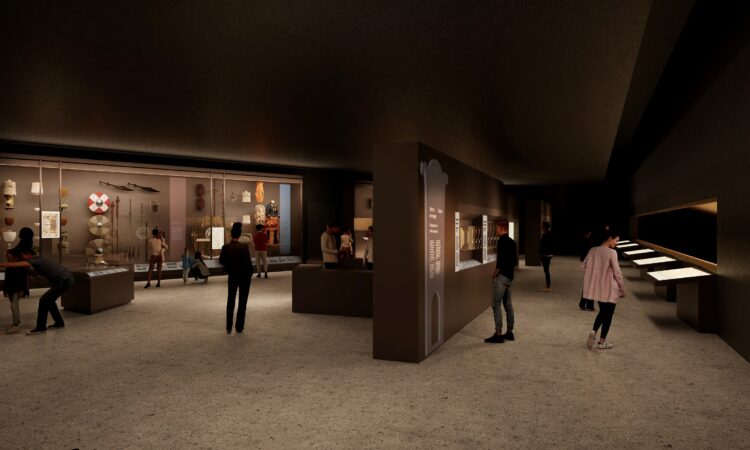
“We are absolutely thrilled to have been selected. It’s both a privilege, and a responsibility, to have been offered the opportunity to design the museum that will house this unique, fragile, emblematic object. As a British practice with a long history of working in France, there’s poetry in being able to contribute to a project that symbolizes the deep connections between our two countries, renewing these bonds and helping the next generations in their rediscovery of the tapestry, itself a unique embodiment of this shared past.” Stephen Barrett, Partner, RSHP.
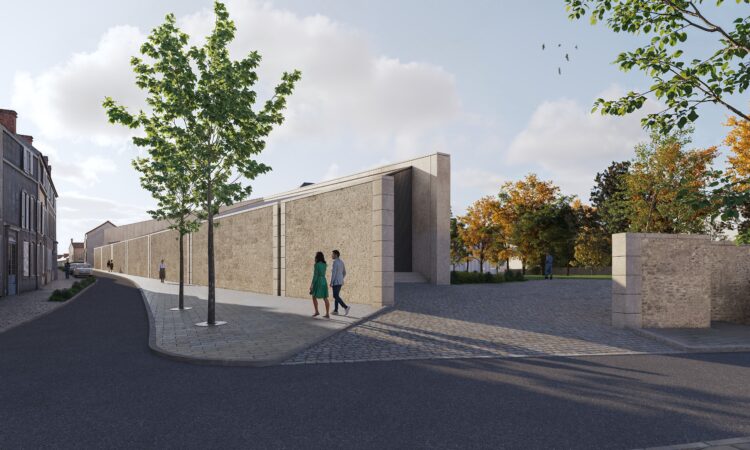
After regulatory archaeological excavations on the site of the museum extension, the old car park will be replaced by a landscaped garden, protected from possible street disturbances, a sort of “contemporary cloister” open to all. This new natural space, in the heart of the city, will constitute an ideally located green island, favorable to biodiversity and quality of life.
[View from Rue aux Coqs on the entrance to the public garden and view from inside this green cloister.]
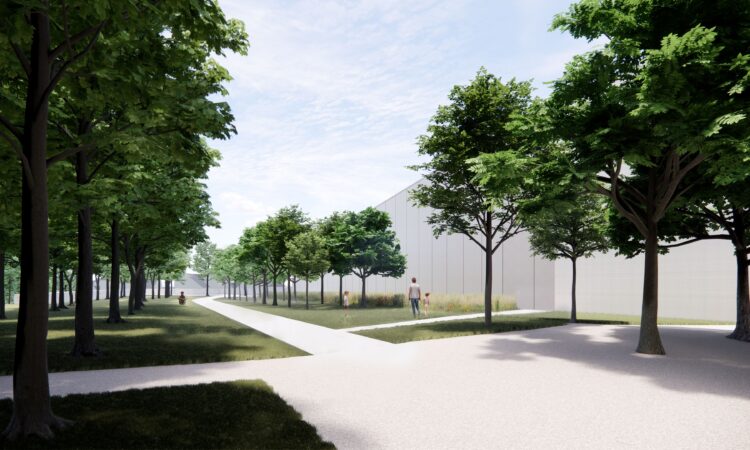
Share